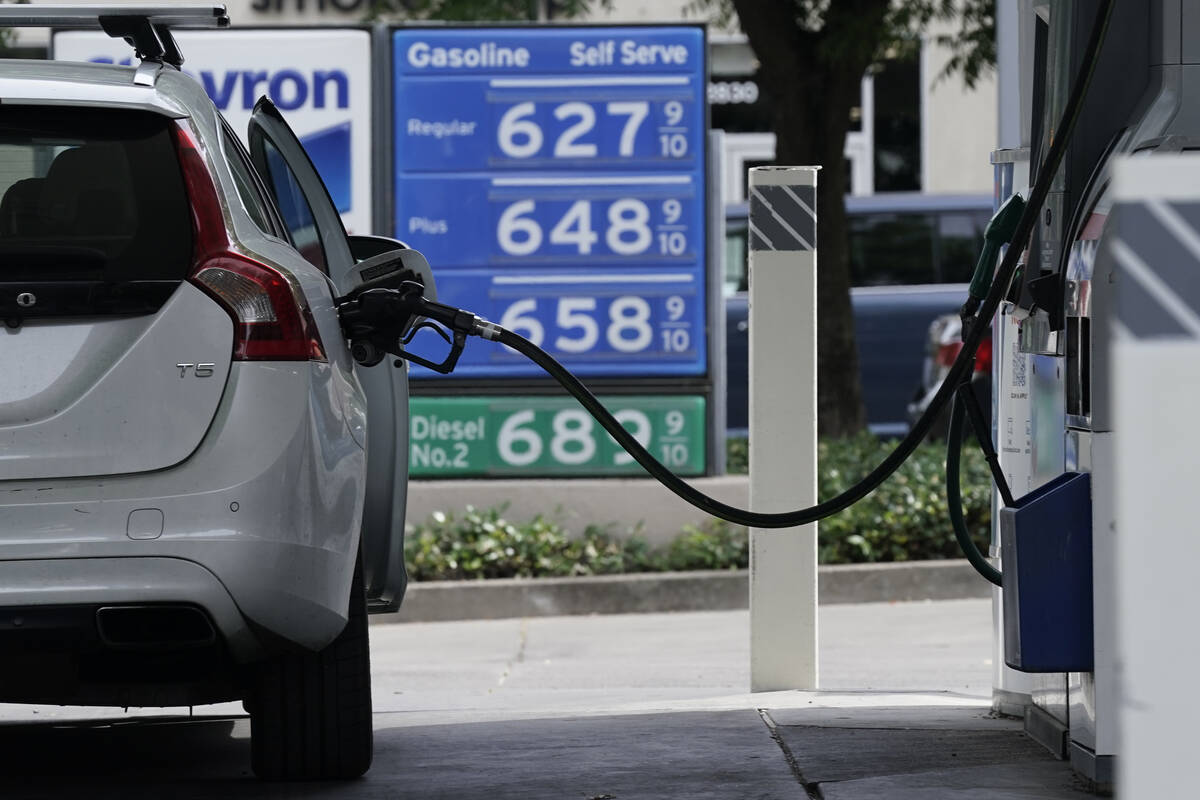EDITORIAL: How Democrats’ war on fossil fuels led to high gas prices
There’s a direct line from Democrats’ war on fossil fuels to high prices at the pump.
Nevada’s gasoline prices have dropped a bit from last month’s record highs, but the average remains well above $5.30 a gallon. Ironically, the reason for the recent drop in prices is worrisome. The price of oil fell because investors believe there’s a recession on the horizon that will lower demand. A recession that brings widespread job losses could ripple through the economy, potentially upending the housing market. That’s concerning, especially in Las Vegas.
Usually, a recession isn’t required to bring down prices. High prices bring high profits. High profits incentivize companies to produce more of the product. More supply brings down prices.
This sequence is one reason why the free-market outperforms centrally planned economies. Prices provide information that individuals and companies use to shift resources to more productive activities.
When that doesn’t happen, it’s worth finding out why. Government intervention is usually the cause, which is what’s happening here.
Many prominent Democrats, including President Joe Biden, contend that a warming planet is an “existential threat” — meaning they believe human race is at risk. They blame fossil fuels for rising temperatures and want to drive oil and gas companies out of business. They have even attempted to pressure financial institutions into cutting ties with major energy producers. Never mind that renewables are nowhere near ready to meet this country’s needs.
“I guarantee you we’re going to end fossil fuels,” Mr. Biden said while running for president. He’s done many things to follow through on that pledge, including limiting oil and gas leases and canceling the Keystone XL pipeline. He also wants net-zero emissions by 2050. Several cities in California have banned new gasoline stations, with the goal of limiting carbon emissions.
Companies — and their investors — have noticed these attacks and regulatory schemes. This has quelled the appetite for making the long-term capital investments that could significantly increase oil production. There are ample domestic possibilities for new fossil fuel development.
A 2020 study in Energy and Climate Change found the time between the discovery of an oil field and max production is usually more than 15 years. Sometimes it’s more than two decades. That lag time increases risk. Investors need to know that there will be a demand for oil in the future to invest in projects today. But when one major political party refuses to acknowledge that fossil fuels remain necessary to meet the nation’s energy needs, the level of future demand becomes a lot murkier. This leads to less investment in projects that would increase supply, which would lower costs in the future.
If voters want lower gasoline prices, they might try electing officials who aren’t opposed to the existence of the fossil fuel industry.

















